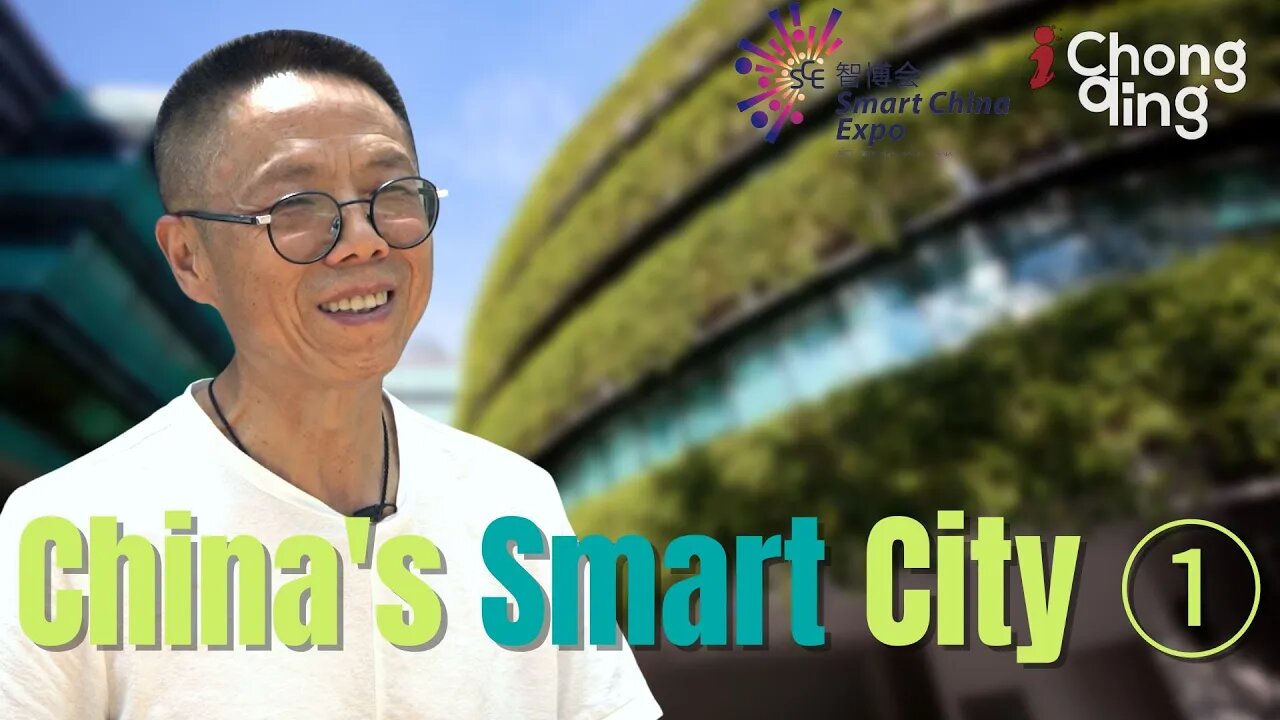Premium Only Content

China's Smart City ①丨Chongqing
A new way of living is needed in urban areas, as demonstrated by the bold and ambitious plans of many talented architects who break with tradition. Chongqing Fangzi is an inspiring building that demonstrates this.
With its fresh outlook, Chongqing Fangzi is a passive green building that uses architectural characteristics of spacial form, material, and structure to save energy and improve human well-being. Passive houses’ energy savings during their lifetime make them sustainable buildings. Using this approach, the construction industry can reduce carbon emissions and meet international climate targets.
With the name “Fangzi,” meaning “building” in Chinese, a walk exposed outdoors connects the ground to the top of the building, similar to how a road would be built in a medieval fortress. The walls and windows indicate that this is a modern building.
Chongqing Fangzi represents an avant-garde vision of future human life.
Solar power is used to heat the building’s water. Rainwater is collected on the roof to water the plants. A bamboo bush forms the mountain walk’s wall, and Bougainvillea surrounds the window, bringing pink color to the concrete. A convection space acts as a natural air conditioner for the office area, and an underground structure facilitates the flow of winds.
“Our ancient philosophy, which is based on respecting and following nature, is the essence of passive green building,” Chen Hangyi, the founder of Chongqing Fangzi, said. “Such thoughts should be inherited and adapted to our practice. As architects, we should make efforts to provide sustainable solutions to the city.” In Chen’s view, one way to improve the environment by consuming power is to install an air purifier, for instance.
Even though passive green seems to contradict itself, all those seemingly natural settings do not isolate themselves from nature but rather utilize nature with a very specific human design – it is, in a way, taming nature by following it. Yet, it is less costly than using some active green equipment.
Chen and his company invested three million yuan in the passive green construction of Chongqing Fangzi. In addition, since there is not a lot of electric equipment, the long-term operation does not cost much. It is a reasonable price for entrepreneurs like him, he said. According to him, passive green building design is the first step towards greening a city.
“What if we insist on doing that and can make up the value to cover the cost?” He said this is an important consideration for both businesses and society.
Chen said he had worked at the Chongqing Architectural Design Institute since 1994. “When I left in 2004, I had a dream to design and build a house that I liked.”
After graduating from Chongqing Jianzhu College, one of the top architectural schools in China at the time, Chen settled in Chongqing as a designer.
He wanted a building that reflected the architectural culture of Chongqing. The stilted building was chosen as the inspiration since stilted buildings are characterized by slopes shared by many of the buildings in Chongqing.
The project began in 2010 after the idea matured. His dream of building a house was realized when he finally got the chance to do so.
In 2014, Chen’s company BOA Design moved into Chongqing Fangzi, which served as its new office building.
Chen rented out some of the lower-floor offices to other design companies and opened the ground floor as an art and music venue.
Chen’s ideas of having more green buildings in the city are valued by the Chinese government.
According to statistics, 77% of China’s new urban construction in 2020 was classified as green. According to a new plan issued by the Ministry of Housing and Urban-Rural Development (MHURD) and the National Development and Reform Commission (NDRC) in 2022, all new urban buildings in China will be constructed following green building standards by 2025. By 2030, about 60% of urban communities will be green communities with easy access to services.
A rapid improvement in building quality is taking place in the Chongqing Liangjiang New Area, where Chongqing Fangzi is situated. All new building projects must follow the current green building standards.
Please, consider SUBSCRIBING: https://bit.ly/2TW3qZt
iChongqing, get to know the secret metropolis of China. Latest news, business opportunities, travel guides, and traditional food and culture. Everything about Chongqing in one place, you can find us here:
WEBSITE: www.ichongqing.info
FACEBOOK: https://bit.ly/2Ezh37k
TWITTER: https://bit.ly/2IRlgYz
INSTAGRAM: https://bit.ly/2H1f4LY
LINKEDIN: https://bit.ly/2WoPs2L
-
 51:19
51:19
iChongqing
6 months ago $0.04 earnedLive JOE BIDEN IS OUT !
1842 -
 UPCOMING
UPCOMING
MYLUNCHBREAK CHANNEL PAGE
21 hours agoMelted Caves in the Jungle
4.82K4 -
 LIVE
LIVE
Bannons War Room
1 year agoWarRoom Live
26,513 watching -
 LIVE
LIVE
Matt Kohrs
9 hours agoCPI Inflation Report, Powell Testifies & Degen Trading || The MK Show
1,676 watching -
 LIVE
LIVE
Wendy Bell Radio
6 hours agoFREE AT LAST
13,466 watching -
 46:00
46:00
BonginoReport
4 hours agoThe Insidious Agenda Behind Pope Francis's Attack on Trump (Ep.138) - 02/12/2025
69.5K176 -
 1:24:22
1:24:22
Graham Allen
3 hours agoEXPOSED! JFK, 9/11, And Epstein Files WILL BE RELEASED! + FEMA Inspector General FIRED!
38.1K15 -
![REP LUNA SAYS THERE WAS A SECOND JFK SHOOTER [EP 4438-8AM]](https://1a-1791.com/video/fwe1/67/s8/1/z/2/f/M/z2fMx.0kob-small-REP-LUNA-SAYS-THERE-WAS-A-S.jpg) LIVE
LIVE
The Pete Santilli Show
17 hours agoREP LUNA SAYS THERE WAS A SECOND JFK SHOOTER [EP 4438-8AM]
1,285 watching -
 1:32:21
1:32:21
Jeff Ahern
2 hours ago $2.24 earnedNever Woke Wednesday with Jeff Ahern
25.8K1 -
 LIVE
LIVE
Vigilant News Network
19 hours agoTrump Admin Strikes Back at Deep State Operatives | The Daily Dose
1,095 watching